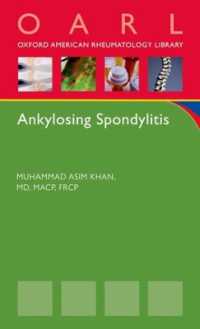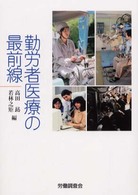- ホーム
- > 洋書
- > 英文書
- > Computer / General
Full Description
There is presently a drastic growth in multimedia data. During the Covid-19 pandemic, we observed that images helped doctors immensely in the rapid detection of Covid-19 infection in patients. There are many critical applications in which images play a vital role. These applications use raw image data to extract some useful information about the world around us. The quick extraction of valuable information from raw images is one challenge that academicians and professionals face in the present day. This is where image processing comes into action. Image processing's primary purpose is to get an enhanced image or extract some useful information from raw image data. Therefore, there is a major need for some technique or system that addresses this challenge. Intelligent Systems have emerged as a solution to address quick image information extraction. In simple words, an Intelligent System can be defined as a mathematical model that adapts itself to deal with a problem's dynamicity. These systems learn how to act so an image can reach an objective. An Intelligent System helps accomplish various image-processing functions like enhancement, segmentation, reconstruction, object detection, and morphing. The advent of Intelligent Systems in the image-processing field has leveraged many critical applications for humankind. These critical applications include factory automation, biomedical imaging analysis, decision econometrics, as well as related challenges.
Contents
1. Digital Image Processing: Theory and Applications.
2. Content-Based Image Retrieval using Texture Features.
3. Use of Computer Vision Technique in Healthcare Using MRI Images.
4. Hierarchical Clustering Fuzzy Features Subset Classifier with Ant Colony Optimization for Lung Image Classification.
5. Health-Mentor: A Personalized Health Monitoring System Using Internet of Things and Blockchain Technologies.
6. Image Analysis using Artificial Intelligence in Chemical Engineering Processes: Current Trends and Future Directions.
7. Automatic Vehicle Number Plate Text Detection and Recognition Using MobileNet Architecture for a Single Shot Detection (SSD) Technique.
8. Medical Image Compression Using a Radial Basic Function Neural Network: Towards Aiding the Teleradiology for Medical Data Storage and Transfer.
9. Prospects of Wearable Inertial Sensors for Assessing Performance of Athletes using Machine Learning Algorithms.
10. Long Short-Term Memory Neural Network, Bottleneck Distance, and Their Combination for Topological Facial Expression Recognition.
11. A Comprehensive Assessment of Recent Advances in Cervical Cancer Detection for Automated Screening.
12. Comparative Performance Study of Feature Selection Techniques for Detection of Parkinson's Disease from Speech.
13. Enhancing Leaf Disease Identification with GAN for a Limited Training Dataset.
14. A Vision-Based Segmentation Technique Using HSV and YCbCr Color Model.
15. Medical Anomaly Detection Using Human Action Recognition.
16. Architecture, Current Challenges, and Research Direction in Designing Optimized, IoT-Based Intelligent Healthcare Systems.
17. Wireless Body Area Networks (WBANs) - Design Issues and Security Challenges.
18. Cloud of Things: A Survey on Critical Research Issues.
19. Evaluating Outdoor Environmental Impacts for Image Understanding and Preparation.
20. Telemedicine: A New Opportunity for Transforming and Improving Rural India's Healthcare.








